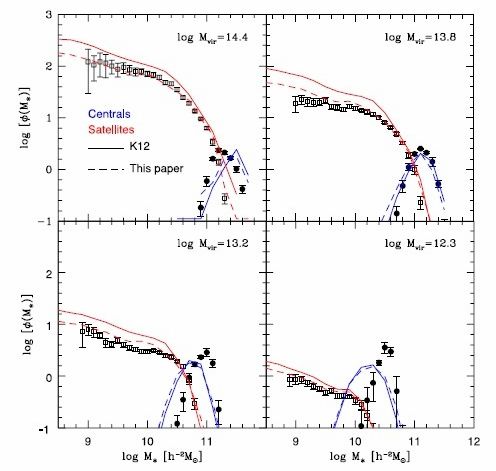To resolve the over-prediction of low-mass satellites, Dr Xi Kang modified the semi-analytical model of Kang et al. (2012) by incorporating a more reasonable feedback efficiency for supernova. In this new model, the cold gas in satellites are heated to the temperature of the subhalo associated with the satellites themselves, but that the host halo. This new model is able to predict the clustering on all scales for galaxy with different stellar mass (see the dashed line in Fig.1)
The paper is now published by the Monthly Notices of the Royal Astronomy Society (Feb 2014, Volume 437, page 3385-3395). This work is supported by the National Nature Science Foundation of China and the National basic research program of China.
For more reading, please refer to :

Fig.1: Projected galaxy clustering for low and high mass galaxies. Data points show the observation of SDSS, the solid lines are the model prediction of Kang et al. (2012), and the dashed lines are the new results in this work.
(Information Source: Purple Mountain Observatory, CAS)

